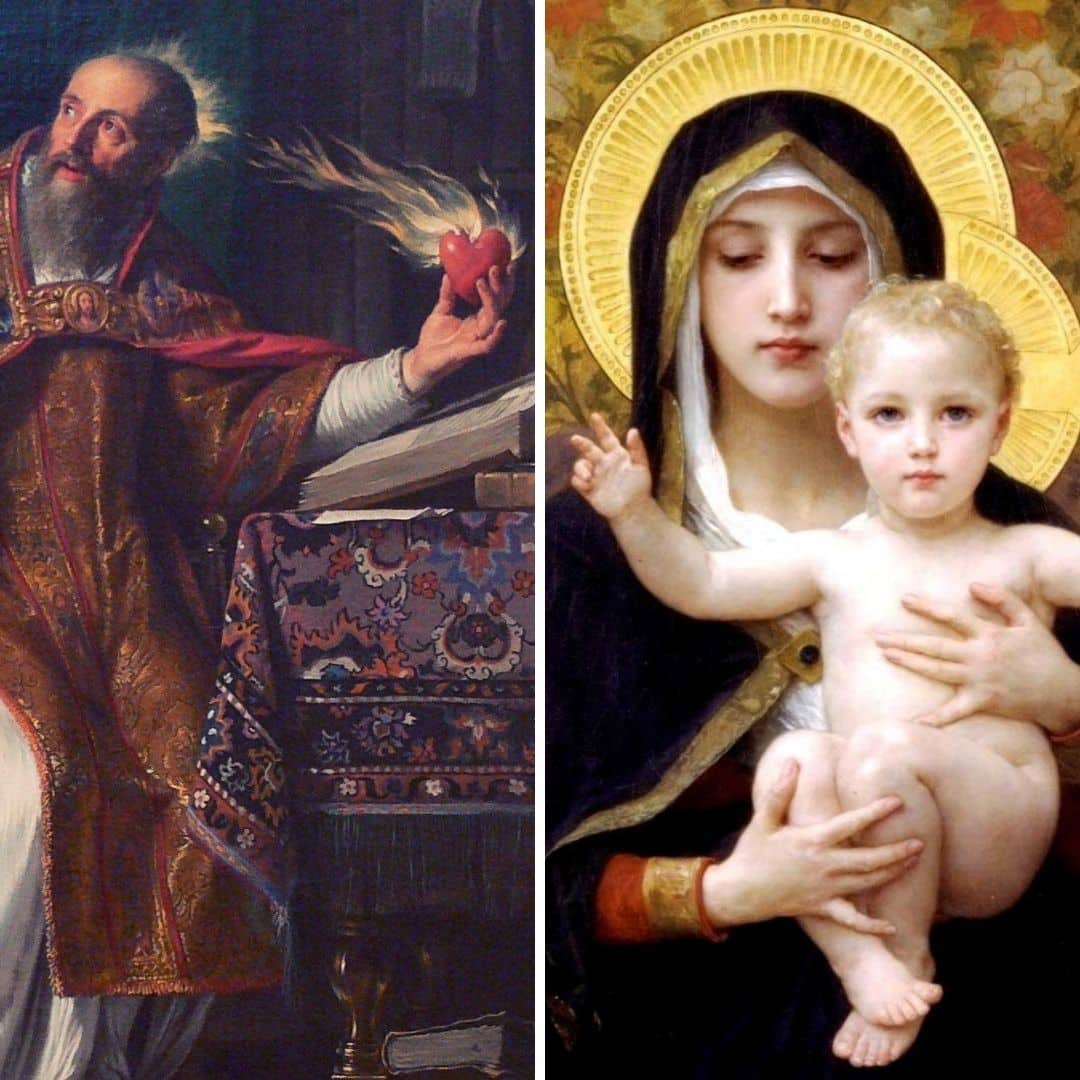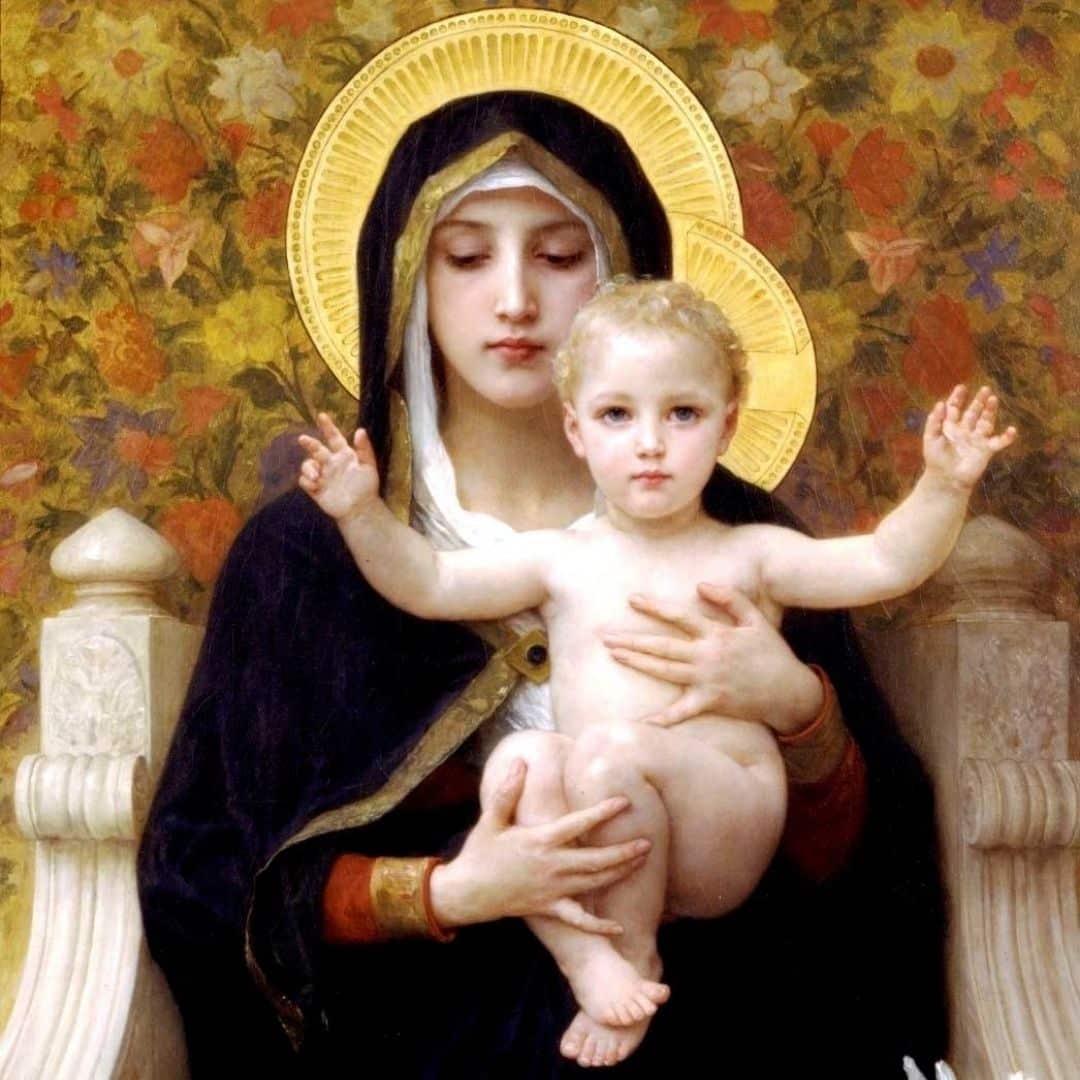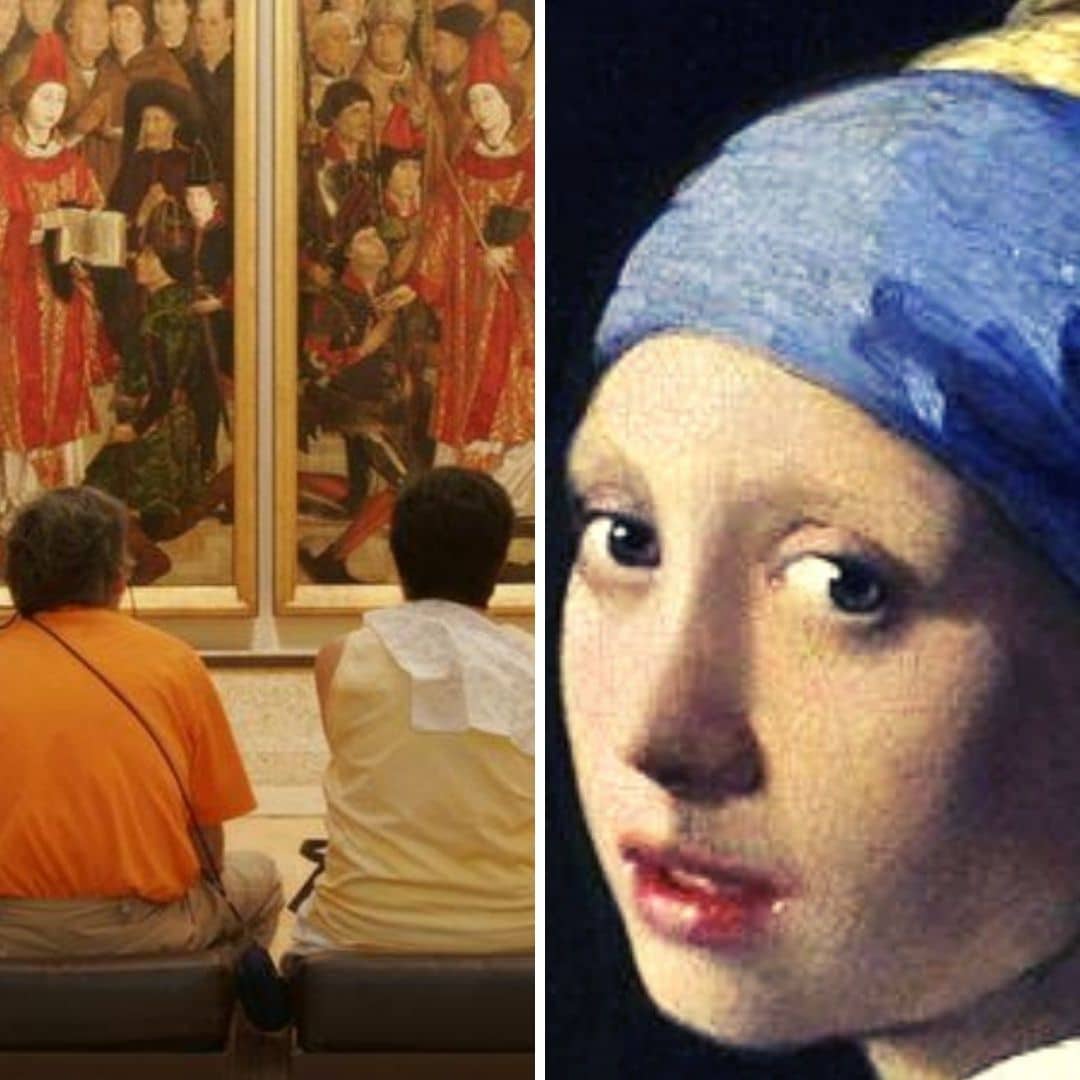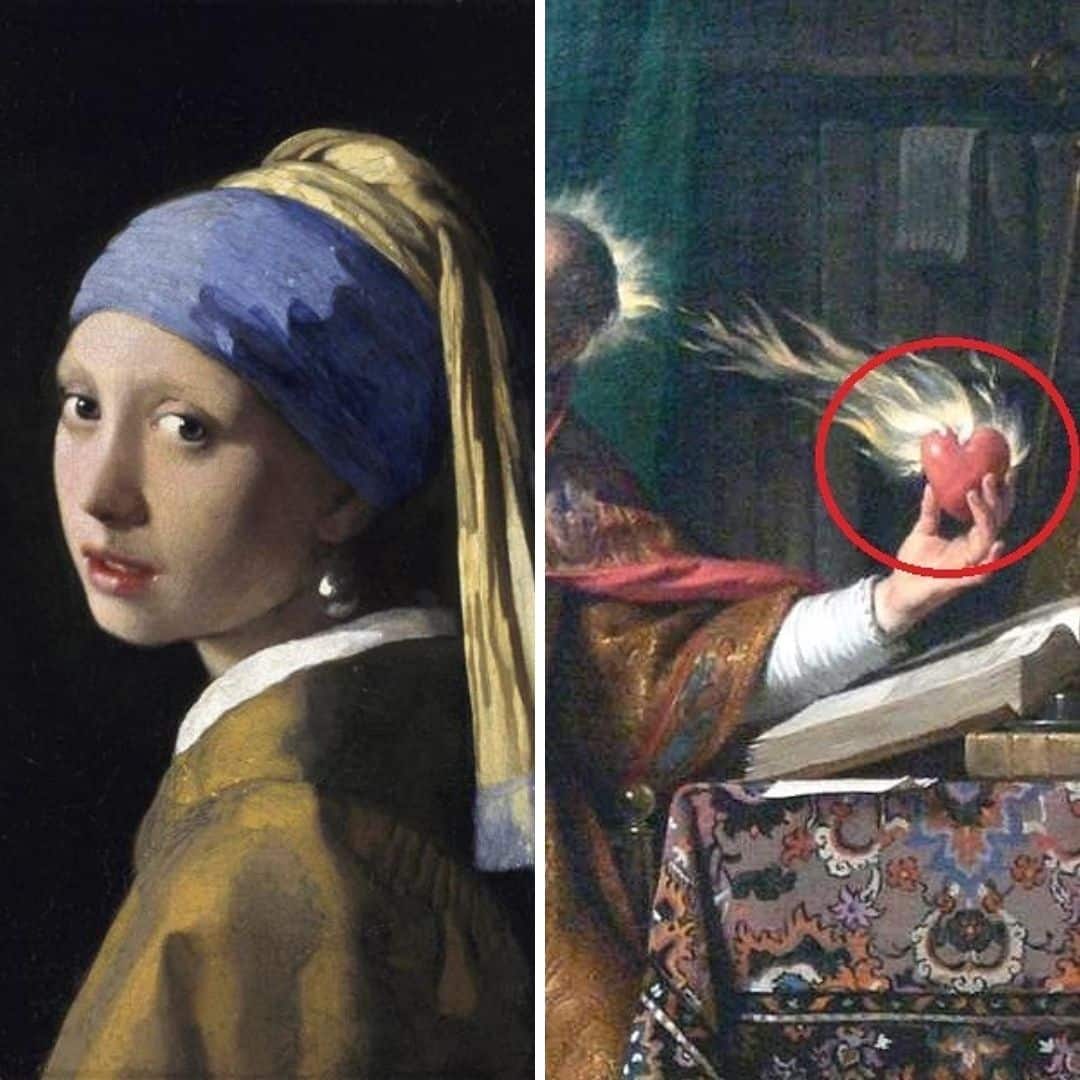Religious art is full of subtle visual cues that help us identify figures and their roles. Iconography in art is an important tool for art analysis.
This article focuses on regular clergy robes – monks and friars who belong to specific religious orders – and how to recognize them in paintings and sculpture.
Learn to distinguish Franciscans by their simple brown robes and knotted cords, Dominicans by their black-and-white habits, and Benedictines by their dark monastic garments.
A practical guide for interpreting religious imagery with historical depth.
Let 's look at the iconography of regular clergy robes of the principal Orders in this article by Yolanda Silva, from the online course Iconography of the Saints.
How to identify the regular clergy robes
In the history of Art there are often representations of saints, martyrs and clergymen of the regular clergy. One of the ways of identifying the characters represented is through the clergy robes .
You can read this post in: PORTUGUÊS
The Regular Clergy
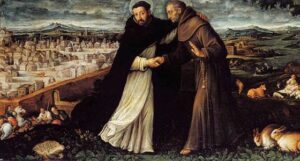
Saint Dominic and Saint Francis, Angelo Lion, Basilica dei Santi Giovanni e Paolo, Venice
The regular clergy (from the Latin «regula»: rule) follow a given rule imposed by a religious order.
Within their order, regular clergy also have their own hierarchy and titles but, unlike the secular clergy, they do not live among the laity, but in their own spaces, like monasteries, convents and abbeys.
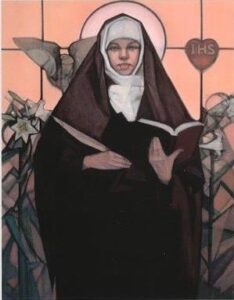
Saint Teresa of Ávila, painting of Janet McKenzie.
Inside of the religious orders, we can find four types:
Monastic
Monks and nuns who live in solitude, in monasteries located in remote areas, on the outskirts of the cities and villages (e.g. the Benedictines, the Carthusians, the Poor Clares, the Cistercians);
Mendicant friars and nuns
They live in convents inside the city limits and keep a more active apostolate among the laity, through works of charity, surviving on donations and pledging to live in poverty (e.g.: Augustinians, Carmelites, Dominicans, Franciscans);
Canons Regular
Formed exclusively for canons (like the order of the Canons Regular of St. Augustine and the Premonstratensians or Order of Canons Regular of Prémontré);
Clerics Regular (formerly Clerks Regular)
These don’t live so enclosed as monks and friars, and are more oriented to a community life among the laity. This regular clergy participate, often, of the activities of the secular clergy, as the liturgy, education and the administration of the sacraments (e.g. Crosier, Jesuits, Theatines).
The Regular clergy robes
The Regular Clergy Robes of most Orders reflect their vows, demonstrating modest but worthy costumes, much in the image of the humble of their time.
Thus, the regular clergy robes are of great simplicity, varying in cut and shape, according to the order to which the person belongs, and consisting mostly of a scapular and a hood.
Let’s analyze briefly the clergy robes of the main religious orders:
Benedictines
Also called the black monks, because they wore a black wool habit, their vestment had long sleeves and a hood and they wore shoes and socks;

Cistercians
The habit was the same as that of the Benedictines, initially in brown. The order eventually switched to white or grey with a brown scapular and then evolved to a white habit with black scapular;
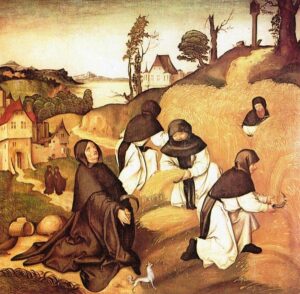
Cistercians at work in a detail from the Life of St. Bernard of Clairvaux, illustrated by Jörg Breu the Elder (1500)
Carthusians
Their first Clergy Robes were made of coarse fabric and a shirt of esparto (a bush used to make ropes and mats), but today they dress white twill;
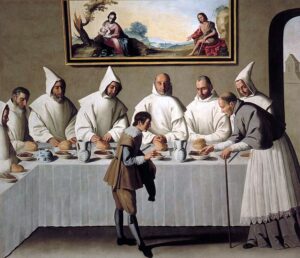
Painting in the Charterhouse of Nuestra Señora de las Cuevas in Seville by Francisco de Zurbarán.
Augustinians
The Augustinian Hermits friars wore grey; the Canons Regular of St. Augustine used on black cassock and a hood; the Canons Regular (founded by St. Norbert) wore white; the Gilbertins (founded by St. Gilbert) wore a black habit with a white cover; the Regular Canons of St. Anthony the Abbot wore a black habit with a white tau-shaped cross (Τ or τ); and, finally, the Canons Regular of the Holy Trinity or Trinitarian friars had a white habit, with a blue and red cross, a hood and a black cockle hat;
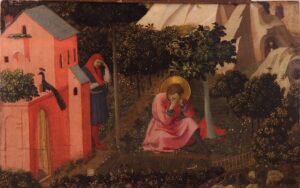
The Conversion of St. Augustine by Fra Angelico, 1430
Franciscans (Orders of Friars Minor)
Their habit was grey, but with time they started using brown. They also have a hood and they use a belt made of rope with three knots (symbolizing their three vows: poverty, chastity and obedience). Generally, they are barefoot or wearing sandals;
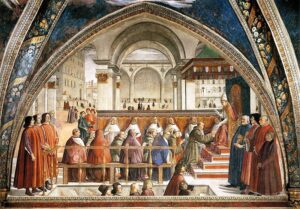
The Confirmation of the Franciscan Rule, by Domenico Ghirlandaio (1449-1494), Capella Sassetti, Florence
Capuchin Friars Minor (derived from the Franciscans)
They dress like the Franciscans, though the hood is longer, walk barefoot or nearly barefoot, and are bearded;
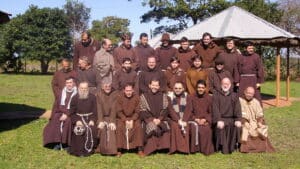
Clergy robes of Capuchin friars in Paraguay, wearing the traditional Franciscan habit.
Dominicans (Order of preachers)
Their habits are of white wool, with a white hood and a black cape. Until the 13th century they wore the rochet, but it was replaced by the scapular (in black);
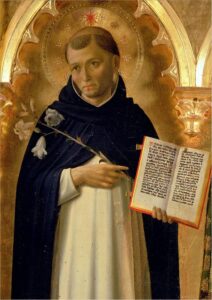
Saint Dominic, portrayed in the Perugia Altarpiece by Fra Angelico, Galleria Nazionale dell’Umbria, Perugia
The Carmelites (Brothers of our Lady of Mount Carmel)
Mendicant order whose vestments also evolved: originally, they wore a belted tunic, scapular and a black, brown or grey hood; the cover had black and white vertical stripes. Today, the Carmelites use a brown habit with a white cover;
Jesuits (the Society of Jesus)
They began to use the same Clergy Robes as the secular priests from Spain at the time of their foundation: the black cassock with a black cap or hat. The only imposition they had was showing humility in their attire, thus honouring their vow of poverty.
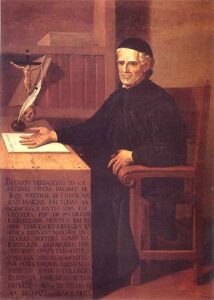
Clergy Robes – Padre António Vieira


